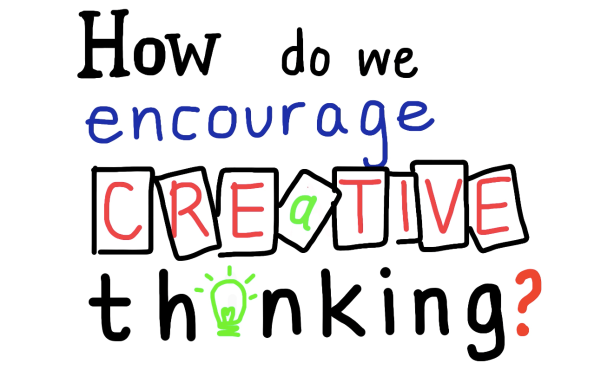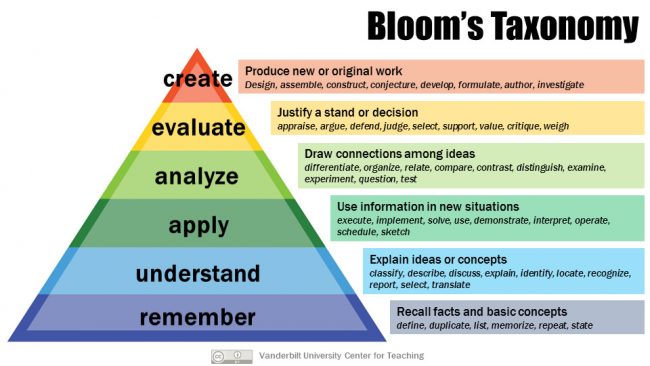 The Creative Revolution – full STEAM ahead
The Creative Revolution – full STEAM ahead
First there was the Industrial Revolution in the late 18th century with the mechanisation of the textile industry. Then, the second industrial revolution of the early 20th century leading to increased mass production and in the 1980’s the Digital Revolution was well underway, changing industry again. So what’s next?
Are we about to have a new revolution or is it staring us in the face? Could this be the Age of Creativity?
According to Sir Ken Robinson, “Creativity is as important in education as literacy” so what are we doing about it? (TED, 2009)

We read about the importance of STEAM and the integration of the Arts being crucial for holistic education, so why, in the UK, are creative subjects being cut from GCSEs and A Levels, including History of Art. (Independent, October 13th 2016) In fact, A Level History of Art will see its last students examined in 2018. In response, historian Simon Schama says: “Axing art history deals another blow to the creative capital of this country. Art history is an exacting discipline: to engage with it needs history, philosophy, languages, literature, tools the next generation needs.”
In the US, Trump proposed cutting funding to Arts related agencies like the National Endowment for the Arts (NEA) (Independent May 1st 2017)
In Australia, over 50 creative subjects have lost funding for student loans including jewellery, circus and art therapy (Student loans cut to creative courses, Richard Watts, ArtsHub, 10 October 2016).
So instead of supporting and promoting more time and resources to creativity it appears to be quite the opposite.
Why is creativity so important to our future?
For over 20 years I have been promoting the benefits of the Arts and how the skills involved in our subjects go beyond simply being able to paint, draw, sing or dance. It genuinely upsets me that students, at aged 14, can all but give up any form of creativity as they enter GCSEs. Even Group 6 of the IB Diploma is optional, where students do not have to choose a creative subject and can opt for another science or language for example. In my short video, prepared as a proposal for an ADE showcase on creative thinking, I highlight the growing trend away from creativity further up the school and how this skill is such an important life skill. A skill needed for a world that is rapidly changing, for jobs which we do not yet know and the obvious need for innovative and creative thinkers.
Being creative is not about being artistic, dramatic or musically minded. It is about thinking differently. Creative thinking is a skill that must be encouraged and taught through opportunities in every subject.
Tara Prendergast, in her TEDx talk The Creative Revolution, reminds us that we are “living in a world that is moving so fast and where technology is blowing our minds”. Being creative is one of the top skills needed to prepare students for this future. According to P21’s Framework for 21st Century Learning “A focus on creativity, critical thinking, communication and collaboration is essential to prepare students for the future.”

In order to develop this essential skill Prendergast says we should “build community and a culture around creativity”. So what does this look like in your school? What exists already to encourage and cultivate a culture of creativity?
How can we encourage creativity?
In Primary school, play forms a crucial role in allowing students the time and space to freely experiment, invent, fail and succeed.
The Kindergarten approach allows learners to develop as creative thinkers for a world that is changing more rapidly than ever – the need to be creative is imperative in order to come up with innovative ideas for solutions we don’t not know about yet. “We need to develop innovative solutions to unexpected problems that will arise” (Mitchel Resnick, MIT). In the same way that Kindergarteners learn, we need to continue this approach throughout our lifetime: experimenting, inventing, failing and succeeding. There is a genuine need to tinker and play in order to develop creativity.
In my previous post about Play, I talked about the need for students and adults alike to be more playful, to problem solve and thus more creative. But what about higher up the school? How can all subjects integrate elements of creativity alongside their content?
In the revised Bloom’s Taxonomy, CREATE appears at the top, upgrading “synthesis” and leapfrogging “evaluating”, for we know that, in order to create we must thoroughly evaluate first. How do different curriculum areas incorporate this higher order thinking?

What do you do to promote creativity?
Taryn BondClegg, a 5th Grade teacher, recently posted about creativity on her blog, Risk and Reflect. If you are in Primary, I urge you to read this engaging post about her Creativity Thursdays. Actually, if you are NOT in Primary, I urge you to read her post! In brief, she dedicates one whole day a week for her students to pursue their creative passion or a creative project they want to learn more about. They select from “a menu of creative endeavours” each week and what Taryn noticed goes way beyond simple creativity:
Not only were students developing their Learner Profile attributes, PYP attitudes and ATL skills, but there was also rich, authentic engagement with literacy, math, humanities and science!
Whether you are interested in STEAM projects or just want to help develop curious and creative individuals, there is compelling evidence for teaching innovation and creativity.
Imagination is more important than knowledge. Albert Einstein
Pete O Mara, in the Times Herald article on May 17th, 2017, states that “developing the creative mind has never been more important“. Why are schools and parents paying more attention to grades and assessments and such little emphasis on creativity and imagination?
“We place such a high value on intellect in our education and ignore imagination.” (Pete O Mara)
 Photo Credit: Shakespeare1980 Flickr via Compfight cc
Photo Credit: Shakespeare1980 Flickr via Compfight cc
There are so many ideas for incorporating creativity, imagination and thinking, I found it hard whittling my research down to just one to start you off! The 3 Rules of Creativity by Stephen Guise on Pick the Brain, back in 2014, still rings true for me today and hopefully offers you some simple guidance:
3 Rules of Creativity
Rule #1 Limit your options and narrow your focus
Being specific about what your task or goal is will help focus your ideas. Too many options can be overwhelming so limit these so you can develop better ideas. Narrowing your focus can lead to greater creativity.
Rule #2 Believe you’re creative
Self belief plays a huge part in being more creative as it does in many walks of life. Believing you can improve is the first step.
Rule #3 Embrace bad ideas
By rejecting bad ideas you may be preventing a good idea forming. By accepting bad ideas are just ideas you might be able to combine them to produce a good idea.
Simple, right? You have no excuses – get out there and not only teach creatively but teach for creativity. (Quote courtesy of Sir Ken Robinson)
I’ll leave the last word to John Spencer on how creativity is tough. It is tough but worth it.
So many things to think about in this post – love it. I will try and number my comments so that it’s a bit easier to digest and not rambling, sorry if that looks really official and unemotional!
1) Thank you for raising the need for creativity in the classroom. It is really, really needed and is something I am wrestling with as an IB Chemistry teacher. I would love for my classroom to be a creative one and I often feel constrained by the programme I have to deliver (which you allude to). I have recently read a great book called “The Launch Cycle” (http://thelaunchcycle.com/) which is all about using design thinking to foster creativity in the classroom.
2) You write, “so why, in the UK, are creative subjects being cut from GCSEs and A Levels, including History of Art.” It’s a travesty that this is happening. However, I do think that we need to also recognise that creativity also has a place in the sciences and other subjects, not just the ‘traditional’ creative subjects. Indeed, science is by its very nature creative. So we need more creativity in the science classroom. This blog gives me some great ideas on how to begin that process.
3) Those 3 rules for creativity are so true and thanks for sharing. They link very well with the ideas in The Launch Cycle. I would suggest that before narrowing focus, it is very beneficial to have put many problems/ideas on the table so that you have many things to narrow down from. But starting with a specific focus seems definitely to be a good idea! Rule 2 seems so important! So many people (including myself) have said that they are not creative. This is simply not true. We are all creative, and are all creating all the time. Perhaps our role as teachers is to remind students of this and help them identify the moments when they are being creative (and to celebrate that).
Thanks so much for this blog post. It is aligning very well with what I am thinking about at the moment. We need to catch up in August to chat about how we might encourage creativity in the classroom!!!!!
Hi Louie,
Thank you so much for taking the time to read the post. I’ve ordered the Launch book and will take a look at over the summer, so thank you so much for the recommendation – it looks like a great one! I’m so glad to hear you want to build on the creativity in your classroom – what ideas have you got so far? How can I help? Really happy to connect and work further with you – are you at East?
Nicki
Hi Nicki,
I think another crucial way to move towards a culture of creativity is to allow students (and teachers) access to different context and experiences (frequently). Something that always strikes me about holidays and summers is how refreshing it is to just try something new, to break the routine.
Obviously some aspects of school benefit from the structure of routine, but I do feel the need to advocate for more ‘collapse days,’ where we commit to something different. During the last week of school, Louisa Radford lead a day with refugees at East. It was excellent (and you can read the student perspectives here: http://portfolios.uwcsea.edu.sg/voicesforrefugees/
I found myself wondering why the entire school wasn’t off time table, working togther on that important topic. I recognize this is easier to do at smaller schools, and I know everyone feels pushed for time in their own courses–but still, I think with that constriction schools as institutions need to get creative.
I’m really happy to see you and Louie connecting through the portfolio challenge. Seeing that has made me think we need an end of challenge F2F get together to celebrate come September.
Kind Regards,
Tricia
Thanks so much Tricia I really appreciate your perspective and the day with refugees sounds like an incredible opportunity for all. I agree more variety is key, but in a busy school like ours how do we push for this more often and in different areas of the school? How would an IB teacher react to a loss in course content time or a MS single subject like mine where I see students only once a week? How do we fit it all in?! A connected teacher get together would be a fab idea – let’s plan it for August/September
Happy remaining days of the summer break
Nicki